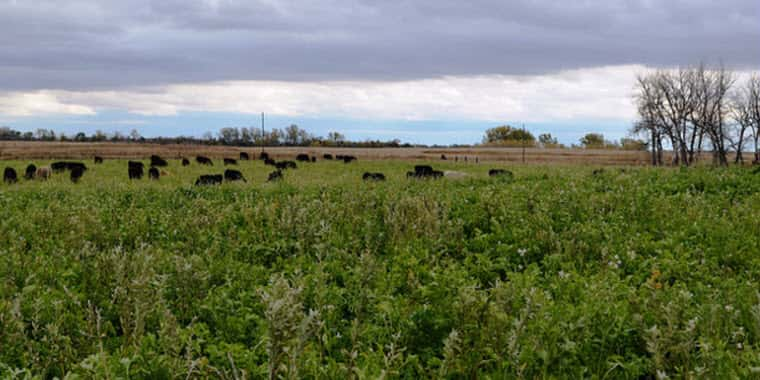BOZEMAN — Montana State University researchers have found that producers throughout Montana who grow cover crops cite soil health as their main reason for growing those crops. The research findings came from a survey that addressed producers’ perceptions and ideas about management of cover crops and the barriers and incentives for cover crop adoption.
The survey was part of a larger study by MSU researchers, including Clain Jones, Perry Miller and Cathy Zabinski, MSU Department of Land Resources and Environmental Sciences faculty, on soil quality and agronomic responses to cover crop mixtures.
“We included questions about what's working, what's not, the benefits producers are seeking, why they would continue using cover crops or have never tried them and how MSU could help,” said Jones.
Five hundred randomly selected Montana producers received the survey. Of the 168 surveys returned, about 30 percent indicated that respondents were growing cover crops and about 90 percent of those say they will continue to use them. Soil health was consistently cited as the biggest reason to adopt cover crops, with nearly 50 percent of respondents stating this as their main reason. Water use, its effect on the next crop and economics were cited as biggest reasons to quit or not grow cover crops.
“Those are good facts to know. They guide our future research and outreach activities,” Jones said.
Cover crop growers seem optimistic about the value of those crops, according to the survey. The Natural Resources Conservation Service provides financial incentives for growing cover crops, though less than half of respondents were aware of the program. Thus, far more individuals are growing cover crops than are getting incentive payments, indicating that economic reasons alone are not their chief concern.
The survey reveals significant interest in using cover crops for forage, with about 30 percent of respondents indicating that they do or would consider this as an option. Researchers say a grazing component could help with financial return and is the focus of a planned MSU study.
“We also learned there are some misconceptions on the benefits and best management of cover crops,” said Jones. “Based on our study, research, agency and Extension entities need to continue their efforts to provide information leading to cover crop success.”
The full survey and report are available on the soil fertility website: http://landresources.montana.edu/soilfertility/covercrops.html.
Jones can be reached at clainj@montana.edu or 994-6076.
Source: MSU News Service


